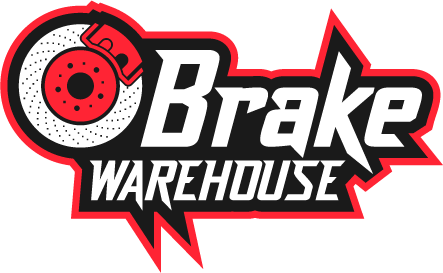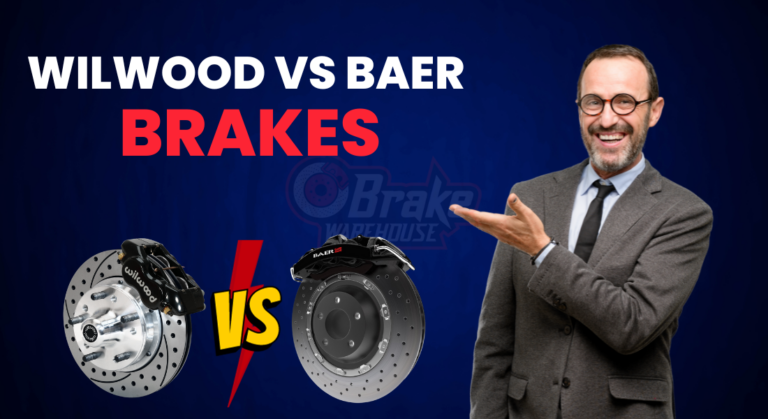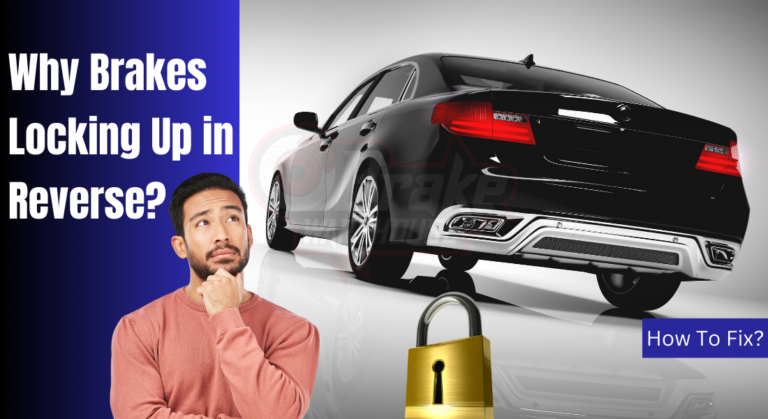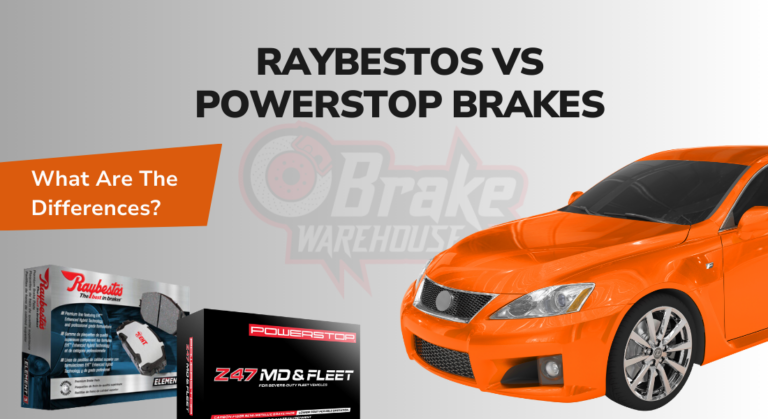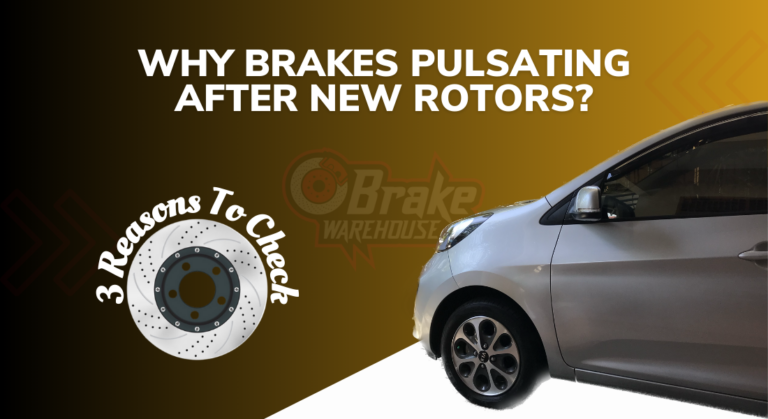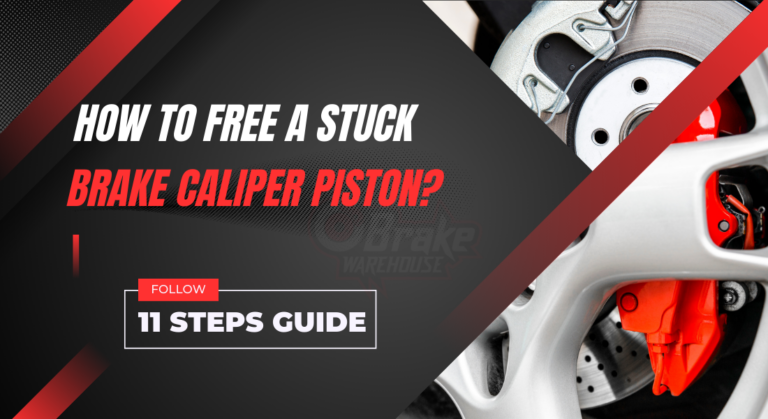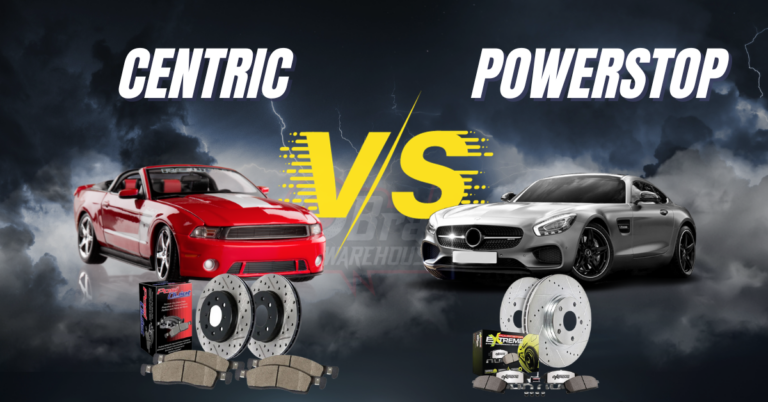How Do You Fix a Grabbing Brake? Reasons With Solutions
When you apply the brake pedal, it should result in smooth and uniform braking. If your brakes grab, drag, or exhibit pulsations, it typically indicates malfunctioning components within the brake system.
Brake grabbing can result from various issues. Worn brake discs may lead to sudden grabbing, especially if visibly deteriorated. Moreover, damaged brake pads can cause a vehicle to pull to one side when braking, requiring replacement. Furthermore, scoring on brake rotors can lead to grabbing and improper braking, potentially causing brake failure.
The good news is that fixations to the brake-grabbing problem are simple. Let’s learn the solutions according to the causes.
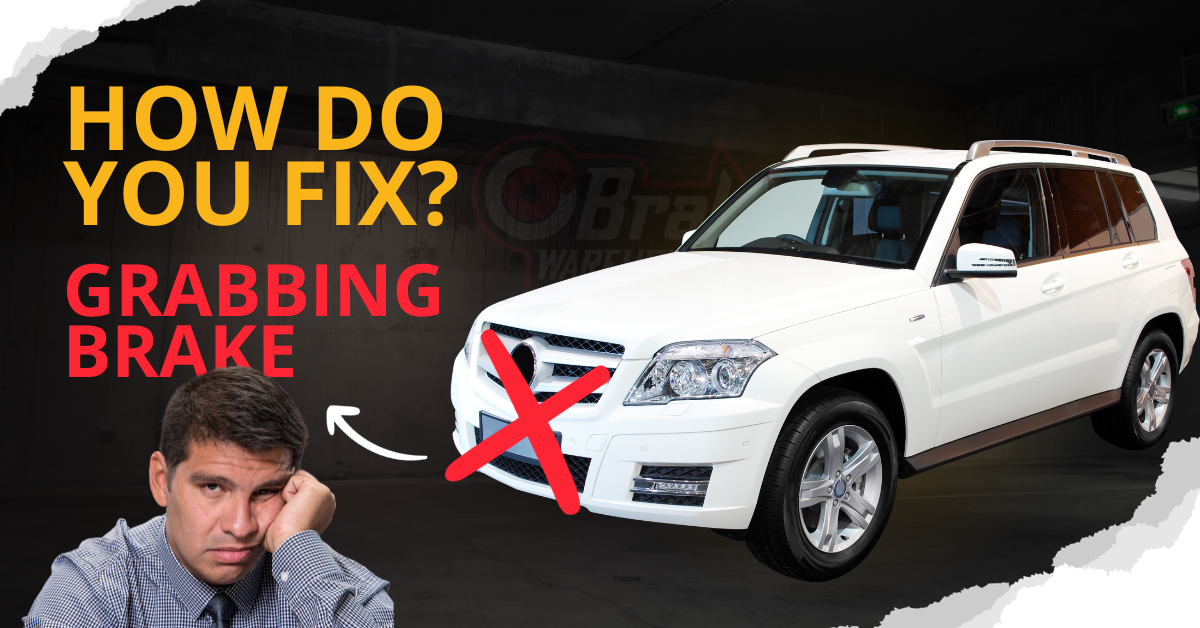
Grabbing Brake Causes With Fixes
Brake grabbing is a common and concerning issue that many drivers may encounter. This phenomenon occurs when the brakes on a vehicle apply unevenly or suddenly, resulting in an abrupt and sometimes dangerous stop.
As stated, several factors can contribute to brake grabbing. Understanding these reasons is crucial for both maintenance and safety.
1. Contamination of Pads
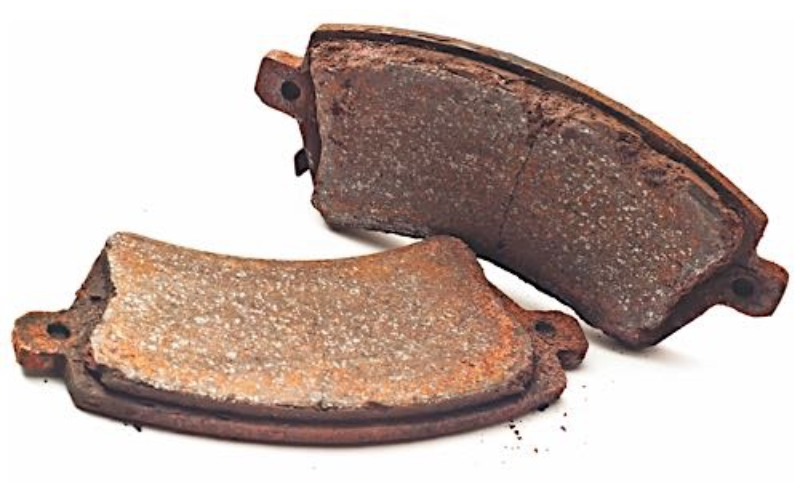
One of the leading causes of brake grabbing is the contamination of brake pads. Brake pads are designed to create friction against the brake discs to slow down or stop the vehicle.
However, when foreign substances like dirt, dust, or debris accumulate on the pad surface, they can interfere with the braking process.
Contaminated pads may exhibit inconsistent grip, causing the brakes to grab. Regular cleaning and maintenance can help prevent this issue.
Additionally, driving in dusty or muddy conditions should be done cautiously to reduce the risk of contamination.
Solution
To fix the contamination of brake pads, follow the below steps.
- Step 01: Remove the affected pads thoroughly with brake cleaner or an appropriate solvent.
- Step 02: Ensure the brake disc is also clean.
- Step 03: Replace any pads that cannot be cleaned effectively.
- Step 04: After cleaning, reinstall the pads and conduct a test drive to ensure proper braking performance.
Read Also: What Causes Grinding Brakes Noise At Low Speed? – Fix Now
2. Linings with Grease, Oil, Brake Fluid, etc.
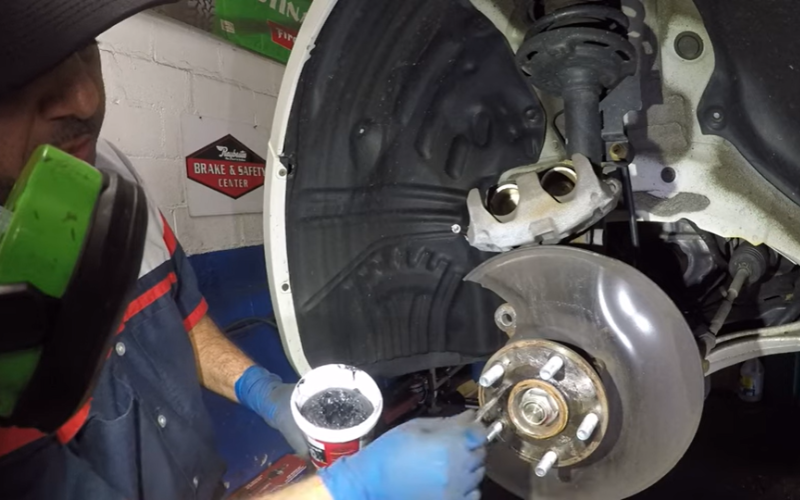
The grease, oil, or brake fluid on the brake linings can significantly affect their ability to grip the brake disc effectively. These substances can seep into the linings due to leaks or improper handling during maintenance.
When linings become saturated with such substances, they lose their frictional properties, leading to erratic braking performance.
To prevent this, it is crucial to address any leaks promptly and ensure that brake components are kept clean and free from contaminants.
Solution
Here are the steps to be followed to fix the issue.
- Step 01: Remove the affected brake linings and clean them using an appropriate solvent.
- Step 02: Replace linings if cleaning is ineffective. Address and repair any underlying leaks causing the contamination.
- Step 03: Reassemble the brake components, ensuring proper installation, and test the brakes for functionality.
3. Misaligned Caliper with Disc
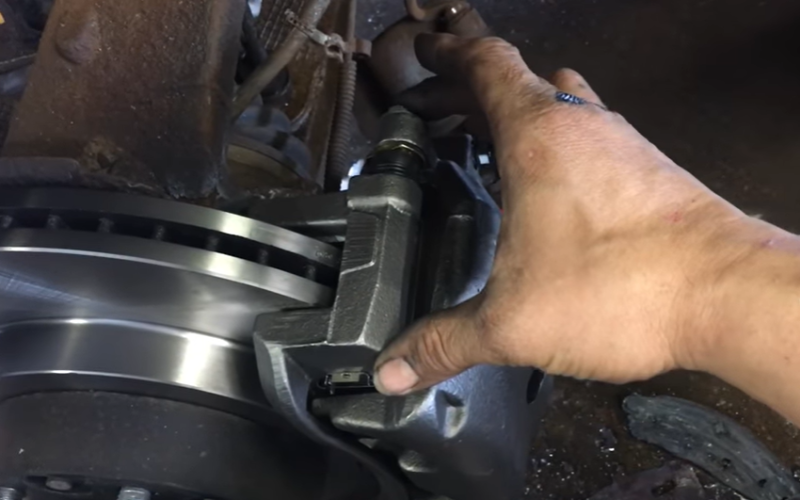
The caliper is a crucial component in the braking system, responsible for squeezing the brake pads against the disc. If the caliper becomes misaligned or is not functioning correctly, it can cause uneven pressure on the brake pads.
This imbalance can lead to the grabbing of one side of the brake while the other remains less engaged. Regular caliper assembly inspections and maintenance are essential to ensure proper alignment and functionality.
Solution
Happily the solution is straightforward. Here is what you need to do.
- Step 01: Safely lift the vehicle and remove the wheel to fix a misaligned caliper with the disc.
- Step 02: Loosen and realign the caliper mounting bolts to ensure it’s properly centered over the brake disc.
- Step 03: Tighten the bolts securely and reinstall the wheel.
- Step 04: Conduct a test drive to verify that the caliper and disc alignment are corrected and that the brakes operate smoothly.
Read Also: How To Free a Stuck Brake Caliper Piston?(11 Steps Guide)
4. Loose Mounting Bolts
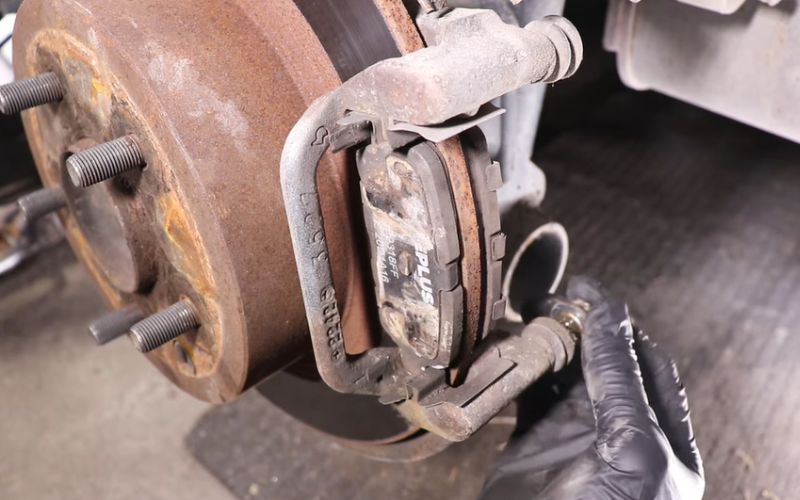
Brake components, including the caliper and bracket, are secured by mounting bolts. If these bolts become loose over time, it can result in excessive movement of the caliper or bracket.
This movement can cause the brakes to grab suddenly when pressure is applied. Routine inspections and tightening mounting bolts are essential maintenance tasks to prevent this issue and ensure the brakes operate smoothly.
Solution
The below steps will help you sort out the problem.
- Step 01: Safely lift the vehicle, remove the wheel, and access the brake component with loose bolts.
- Step 02: Tighten the bolts to the manufacturer’s recommended torque specifications using a torque wrench.
- Step 03: Ensure they are securely fastened. Reinstall the wheel and conduct a test drive to confirm proper brake operation.
5. Clogged or Collapsed Brake Lines
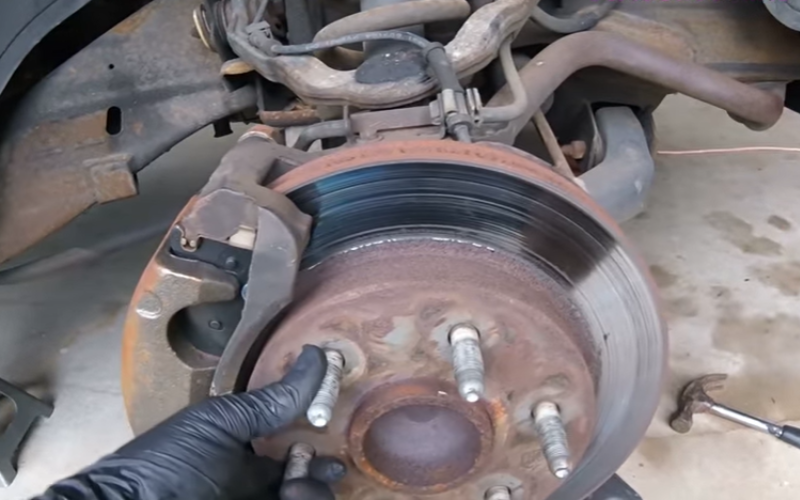
Brake lines transmit hydraulic pressure from the brake pedal to the calipers, initiating the braking action. If the brake lines become clogged or develop weak spots that lead to collapsing, it can disrupt the flow of brake fluid.
As a result, the brakes may grab unexpectedly or fail to engage correctly. Regular inspections of brake lines and their replacement when necessary can prevent this issue and maintain the integrity of the braking system.
Solution
Worry less since the solution is easy with the below steps.
- Step 01: Lift the vehicle and locate the affected brake line to fix clogged or collapsed brake lines.
- Step 02: Replace the damaged or obstructed line with a new one, ensuring it’s appropriately routed and secured.
- Step 03: Bleed the brake system to remove air and restore proper hydraulic pressure.
- Step 04: Test the brakes for functionality.
Read Also: Air In Brake Lines Will Cause What Type Of Problems?
6. Seized Slides
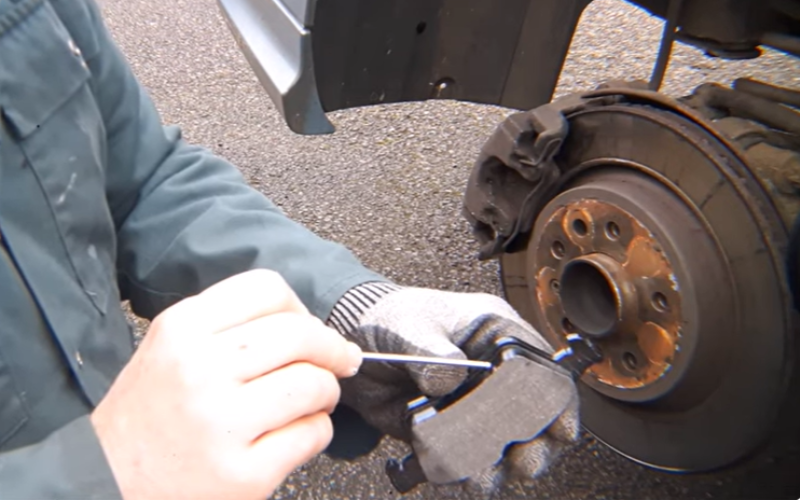
In a disc brake system, the caliper slides on guide pins or bushings, allowing for even and consistent pressure on the brake pads.
When these slides become seized due to corrosion or lack of lubrication, they can hinder the caliper’s movement, causing uneven brake pad engagement.
This can lead to brake grabbing and reduced braking efficiency. Routine maintenance, including cleaning, lubricating, and inspecting these slides, is essential to prevent this problem.
Solution
Follow the below process carefully and solve the error.
- Step 01: Lift the vehicle, remove the wheel, and access the caliper slide pins or bushings.
- Step 02: Remove the affected slides, clean off corrosion or debris, and lubricate them with a suitable brake lubricant.
- Step 03: Reassemble the brake components, ensuring smooth movement, and conduct a test drive to verify proper braking operation.
FAQs
Can I continue driving with a grabbing brake?
Driving with a grabbing brake is not safe and should be avoided. It can compromise your ability to control the vehicle and lead to accidents. Continuing to drive with this issue can further damage the braking system and may result in costly repairs. Seek immediate professional inspection and repair if your brakes are grabbing.
Read Also: How Long Can You Drive On Grinding Brakes? (Is It Safe)
Can I prevent future brake-grabbing issues?
You can prevent future brake-grabbing issues by performing regular brake maintenance. Cleaning and inspecting brake components, avoiding driving in harsh conditions are required. Also, ensuring proper caliper alignment, and promptly addressing fluid leaks or contamination are crucial.
Following a maintenance schedule recommended by your vehicle’s manufacturer is essential for prevention.
Summing Up
So, now you know how do you fix a grabbing brake.
Properly installing brake components and regular maintenance are essential for reliable brake performance. Ensure the correct fitting of brake pads, securing them firmly to the calipers and their assemblies.
Verify that the brakes are contamination-free and that brake lines and hoses remain unobstructed. Utilize high-quality brake cleaner, lubricants, and brake fluid. Choose top-tier brake pads and linings for optimal results.

Meet Zayan, the mechanical genius behind the highly acclaimed brakes problems and solutions website. With over a decade of hands-on experience in the automotive industry, Zayan has become a trusted authority in the realm of brake systems.
His passion for cars, coupled with his expertise in solving complex brake-related issues, has earned him a devoted following of car enthusiasts, mechanics, and everyday drivers seeking reliable guidance.
